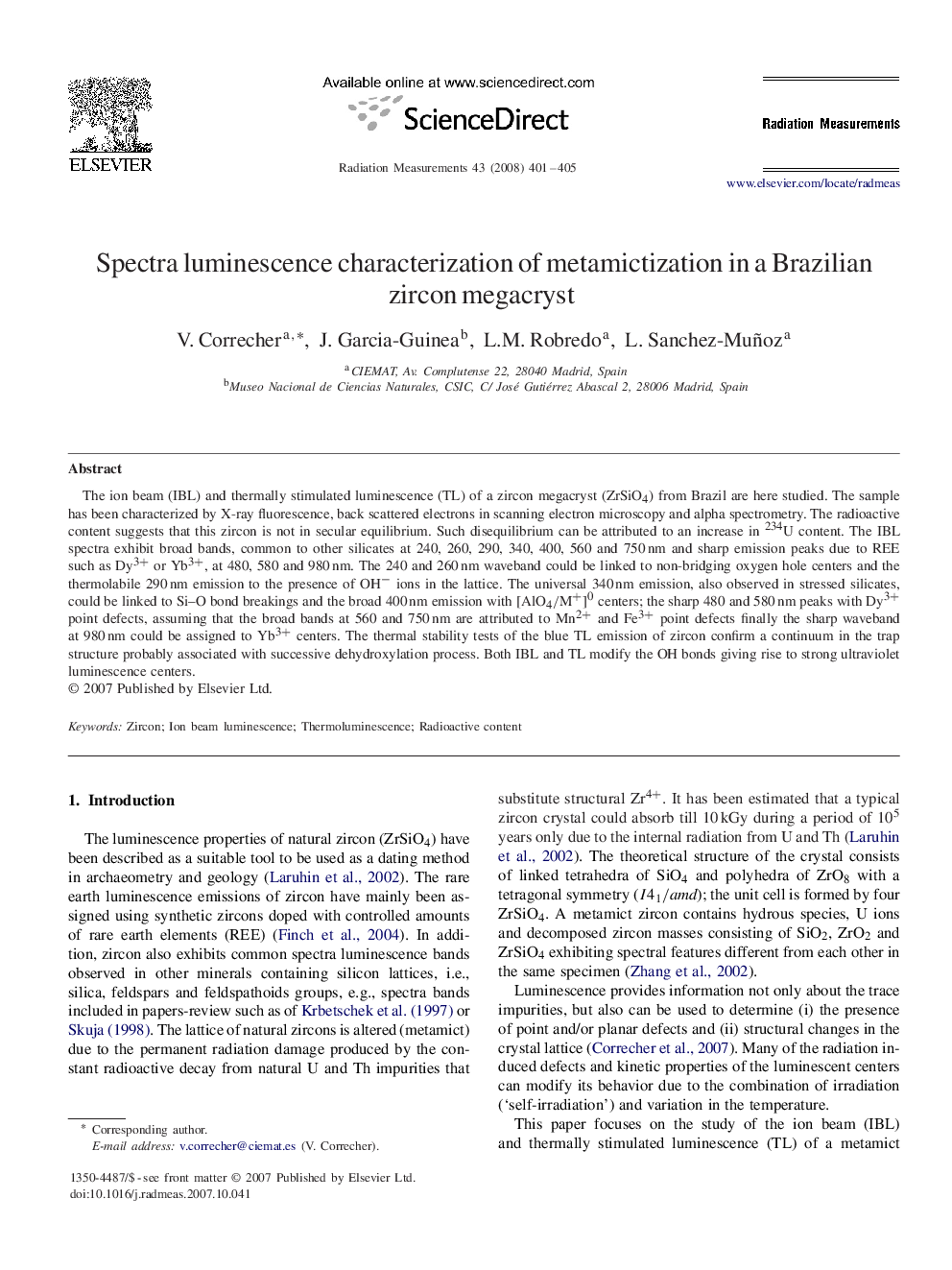| Article ID | Journal | Published Year | Pages | File Type |
|---|---|---|---|---|
| 1881903 | Radiation Measurements | 2008 | 5 Pages |
Abstract
The ion beam (IBL) and thermally stimulated luminescence (TL) of a zircon megacryst (ZrSiO4) from Brazil are here studied. The sample has been characterized by X-ray fluorescence, back scattered electrons in scanning electron microscopy and alpha spectrometry. The radioactive content suggests that this zircon is not in secular equilibrium. Such disequilibrium can be attributed to an increase in 234U content. The IBL spectra exhibit broad bands, common to other silicates at 240, 260, 290, 340, 400, 560 and 750Â nm and sharp emission peaks due to REE such as Dy3+ or Yb3+, at 480, 580 and 980Â nm. The 240 and 260Â nm waveband could be linked to non-bridging oxygen hole centers and the thermolabile 290Â nm emission to the presence of OH- ions in the lattice. The universal 340Â nm emission, also observed in stressed silicates, could be linked to Si-O bond breakings and the broad 400Â nm emission with [AlO4/M+]0 centers; the sharp 480 and 580Â nm peaks with Dy3+ point defects, assuming that the broad bands at 560 and 750Â nm are attributed to Mn2+ and Fe3+ point defects finally the sharp waveband at 980Â nm could be assigned to Yb3+ centers. The thermal stability tests of the blue TL emission of zircon confirm a continuum in the trap structure probably associated with successive dehydroxylation process. Both IBL and TL modify the OH bonds giving rise to strong ultraviolet luminescence centers.
Keywords
Related Topics
Physical Sciences and Engineering
Physics and Astronomy
Radiation
Authors
V. Correcher, J. Garcia-Guinea, L.M. Robredo, L. Sanchez-Muñoz,
